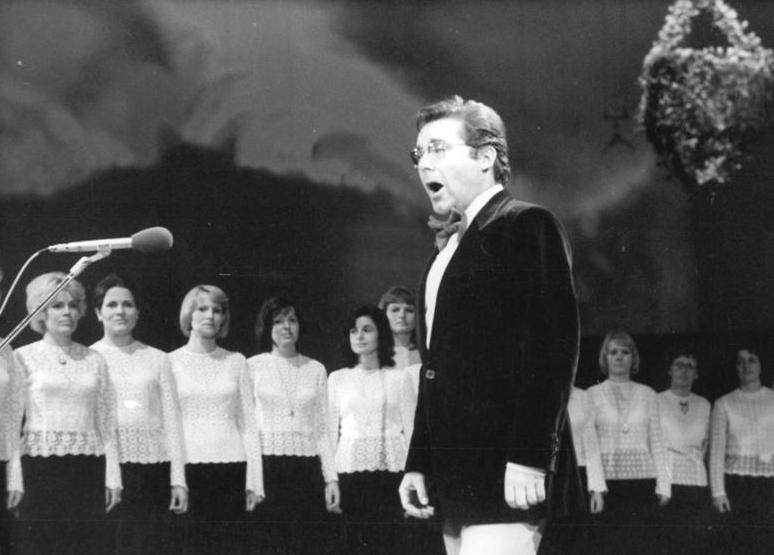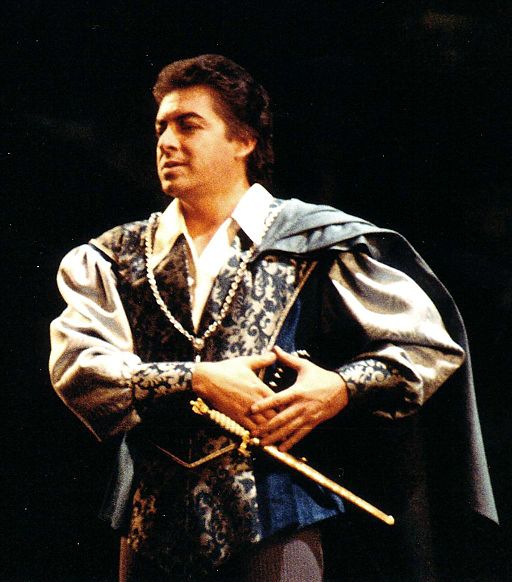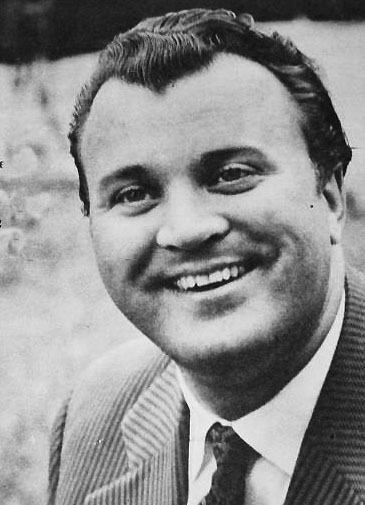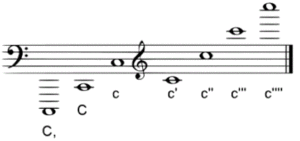Although we often see a division in the Lyric Tenor Fach, there are technically only five Fächer for the tenor voice. Here they are presented in the two main divisions, the Spiel- and Charakterfächer and the Seriöserfächer. Follow the links to both sound examples and an extensive listing of typical roles and audition arias.
Part one: Spiel- und (and) Charakterfach: [ʃpi:l ʊnt ka.’ʁak.tɐ ‘fɛ:.çɐ]
SPIELTENOR / TENORBUFFO [ʃpi:l.te.’no:ʁ te.’no:ʁ.’bʊ.fo] (c to b’)
Buffo Tenor

The comic tenor in the German-speaking countries is a key figure in the opera and operetta. He has much more to do than the so-called comprimario in the American and Italian opera houses. Indeed, many people will include in the category much of what is generally considered the lighter repertoire of Lyrischertenor Fach. Language and acting skills are often more important than singing ability. His popular roles include Pedrillo in Die Entführung aus dem Serail, Jacquino in Fidelio, David in Die Meistersinger von Nürnberg, and Vašek in The Bartered Bride (Czech: Prodaná nevěsta). In many houses, the tenor who sings these roles may also be asked to sing Almaviva or Nemorino. It is quite possible for a young Spieltenor to eventually work into the lighter Lyrischertenor Fach, the deciding factor will be the beauty of the voice and is physical appearance.
Singers: Gerhard Unger, Peter Schreier.
Examples: Gerhard Unger in Der Rosenkavalier; Peter Schreier in Zar und Zimmerman.
Spieltenor roles and arias
CHARAKTERTENOR [ka.’ʁak.tɐ.te.’no:ʁ] (B to b’)
Zwischenfach voice with fine characterization ability.
This voice type is a product of the German theater tradition. It is large with plenty of metal and capable of clear declamation. The Charaktertenor must have the acting ability of a Spieltenor and often the cutting power of the Heldentenor. Along with a number of smaller roles such as Dr. Cajus in Falstaff, Spalanzani in Les contes d’Hoffmann, and Gerardo in Gianni Schicchi, The Charaktertenor has the task of portraying Herodes in Salome and Loge in Das Rheingold.
Part two: Seriöser Fächer [ze.ʁi.’ø:.zɐ ‘fɛ:.çɐ]
LYRISCHER (HOHER) TENOR [‘ly:.ʁɪ.ʃɐ ‘ho:.ɐ te.’no:ʁ] (c to c”)

A supple, flexible voice with a beautiful mellow quality and extended top range.
The Fach of Lyrischer Tenor can be divided into two separate categories: the Lyrischertenor (a tenor leggiero) and the higher Italienischertenor (America’s lyric tenor). In contract negotiations, this is most often considered one Fach. Other problems arise with the term Italienischertenor as it is often reserved for the heavier Italian spinto, the German Judendlicher-Heldentenor. The true Lyrischertenor must have a youthful, handsome appearance. His repertoire ranges from Nemorino to Faust and containing all the Mozart and Rossini tenors, the lighter Verdi roles of like the Duke in Rigoletto and Alfredo in La traviata and Rudolfo in La bohème as well as a myriad of smaller roles. When the Fach is divided, the Lyrischertenor takes the lighter roles and the Italienischertenor the heavier. The audition aria list has been divided into two parts but should be thought of as a whole as the singer of the Lyrischertenor Fach is often required to sing all of the repertoire listed. For auditioning, choose your repertoire according to the weight of your voice, leaving off either the lighter or heavier works as the case may be.
Singers: Francesco Araiza, Tito Schipa, Bruce Ford, Chris Merritt, Rockwell Blake, Frank Lopardo, and Stanford Olsen
Example: William Matteuzzi and Francesco Araiza in La Cenerentola.
Lyrischer Tenor roles and arias
ITALIENISCHER TENOR [i.ta.’lje.nɪ.ʃɐ te.’no:ʁ] (c – c”)
Full Lyric Tenor
Singers: Alfredo Kraus, Richard Tauber, Fritz Wunderlich, Gosta Winbergh, David Rendall, Anthony Rolfe Johnson, Jose Carreras, and Neil Shicoff.
Examples: Fritz Wunderlich in Die Zauberflöte; Nicolai Gedda in Lucia di Lammermoor.
Lyrischer Tenor roles and arias
JUGENDLICHER HELDENTENOR [‘ju:.gənt.lɪ.çɐ ‘hɛl.dən.te.’no:ʁ] (c’ to c”)

A metallic voice with noble, tenoral quality, that can sing both lyric and dramatic passages.
This Fach is the dividing line between the lyric and dramatic tenor voice. It is quite conceivable that someone would sing all the roles of the Lyrischertenor Fach but it is unlikely that anyone would sing both the Lyrischertenor and Jugendlicher-Heldentenor Fächer. The voice demanded is one which has great metal and ring, a secure top and a considerable amount of staying power. This category includes the heavier Italian and French tenor roles of Radames in Aïda, Manrico in Il trovatore, Cavaradossi in Tosca, Don Jose in Carmen, and Canio in Pagliacci. The key to understanding the color and temperament of the German Jugendlicher-Heldentenor is the role of Max in Der Freischütz. Jugendlicher-Heldentenor translates as youthful heroic tenor which is an accurate definition of this Fach as it indicates someone, who, like a good Max may well develop into a Tristan or Florestan. In the German-speaking theater, the color of the voice is likely to be more slanted toward the German metallic singing than the Italian sound of the heavy spinto tenor. Both Walther in Die Meistersinger von Nürnberg and Lohengrin belong to this Fach. There must be an implication of a potential God-character to the tenor singing many of these roles.
Singers: Nicolai Gedda, Franco Corelli, Enrico Caruso, Beniamino Gigli, Jussi Bjorling, Giuseppe di Stefano, Carlo Bergonzi, Franco Corelli, Jan Peerce, Richard Tucker, Luciano Pavarotti, and Placido Domingo.
Examples: Nicolai Gedda in Oberon; Franco Corelli in Aida.
Jugendlicher Heldentenor roles and arias
HELDENTENOR (earlier called Tenorbariton) [‘hɛl.dən.te.’no:ʁ te.’no:ʁ.’ba:.ʁi.tɔn] (B to b’)
Dramatic (Wagnerian) Tenor
A large metallic voice with a baritonal quality with well developed middle and low registers.
Although many tenors of the Jugendlicher-Heldentenor Fach move on to sing the roles of the true Heldentenor, it remains a true specialty Fach that demands an impressive and distinctive dramatic quality with plenty of size and metal and a commanding appearance.
Singers: Jon Vickers, Lauritz Melchior, Wolfgang Windgassen, James King, Siegfried Jerusalem, Gary Lakes, and Ben Heppner.
Examples: Wolfgang Windgassen in Parsifal; Jon Vickers in Fidelio.
Heldentenor roles and arias
______________________________________
Helmholz notation:

(This article is the sixth part in the series on the German Fach System and is based on information derived from Rudolf Kloiber’s “Handbuch der Oper”, 9th edition, Deutschen Taschenbuch Verlag. Read the first part of this series here.)

One thought on “THE FACH SYSTEM: The tenor voice”
Comments are closed.